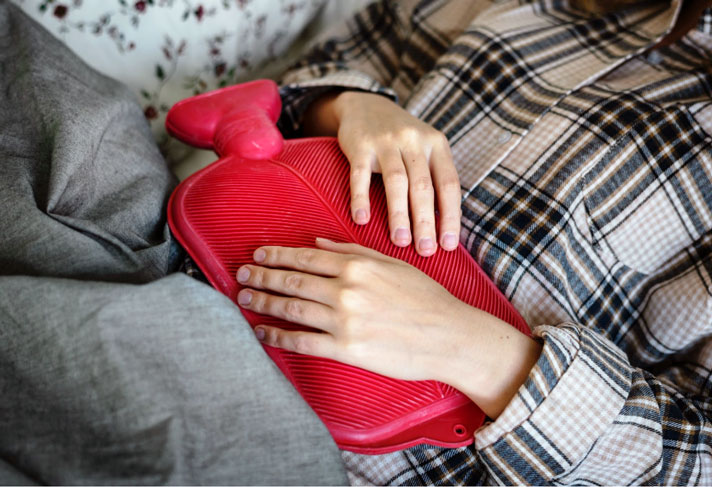Managing Your Painful Periods
Excessively painful periods with intense cramping is a condition called dysmenorrhea, which is one of four abnormal types of menstrual periods. Many women suffer from dysmenorrhea with every menstrual period and the pain can range from mild discomfort to disabling pain. Often women will find their pain to lessen after giving birth the first time but some women continue to experience significant pain even after having children.

What Causes Menstrual Cramps?
Period cramps occur when the uterus contracts during your menstrual period. Your uterus is a muscle that may contract quite strongly during your period. If the uterine muscles contract too strongly due to an excess of prostaglandins, the muscles may cut off the supply of oxygen to that area, which in turn causes pain.
Dysmenorrhea includes:
- Achy sensations in the lower abdomen or lower back
- Feeling pressure or cramping
- Pain in the hips and inner thighs
- Having an upset stomach, sometimes even vomiting
- Diarrhea or loose stools
Dysmenorrhea can be described as primary or secondary depending on the causes. Primary dysmenorrhea is due to abnormal uterine contractions as a result of a chemical imbalance. Primary dysmenorrhea begins with the first and can continue with every period until menopause.
Secondary dysmenorrhea often develops later in a woman’s life and is associated with medical conditions. Secondary dysmenorrhea is very often caused by endometriosis and pelvic inflammatory disease. Other causes of secondary dysmenorrhea include uterine fibroids, an abnormal pregnancy, miscarriage, or ectopic pregnancy, or a variety of infections, polyps and tumors in the uterus.
What Methods are Used to Diagnose Dysmenorrhea?
Your primary physician or gynecologist can diagnose dysmenorrhea. Diagnosis begins with a complete pelvic exam and health history. In some cases dysmenorrhea requires an ultrasound or MRI to diagnose. It is also possible to diagnose dysmenorrhea through laparoscopy and hysteroscopy. For the laparoscopy procedure, a thin tube-like scope is inserted into the abdominal wall. The tube contains a light and a lens that allows your doctor to get a better look at the uterus. A hysteroscopy is a visual examination of the cervix and uterus using a hysteroscope that is inserted into this area via the vagina.
What Relieves Dysmenorrhea Pain?
Women with mild menstrual cramps may find relief with over-the-counter medications such as aspirin, ibuprofen, acetaminophen or naproxen sodium. Speak with your doctor about which medication might provide the best relief and the dosage. Don’t wait until the pain is severe to begin seeking treatment.
Heat may also help your lower back and uterus area feel better and relieve some of the pain. Taking a warm bath can be soothing and using a heating pad may help your muscles relax. It’s important to not put a heating pad or hot water bottle directly on skin.
The follow may also reduce your pain:
- Rest
- Avoiding caffeine and salt
- Don’t smoke
- Avoid alcohol
- Massage
- Exercise
It’s important to not stop exercising during your period. Women who exercise routinely tend to have less pain during their periods. If you don’t exercise regularly, try walking, yoga, or some other form of movement to keep your circulation moving and reduce your menstrual discomfort.
If you are still suffering from pain from dysmenorrhea, make sure to discuss this with your doctor. Strong pain medications may be necessary in your specific case.
Oral contraceptives may also be used to treat dysmenorrhea. Studies have shown that women who take birth control pills to have less pain associated with menstruation.
Surgical Procedures to Treat Dysmenorrhea
There are three main surgical options to treat uterine pain: endometrial ablation, endometrial resection, and hysterectomy. Endometrial ablation is a procedure that destroys the uterine lining. Endometrial resection may be done to remove the uterine lining altogether. A hysterectomy is a serious surgery which removes the entire uterus.
If you have persistent discomfort during your menstrual period, please speak to Kansas City ObGyn for more information on how we can lessen your monthly pain. Contact us at This email address is being protected from spambots. You need JavaScript enabled to view it. or (913) 948-9636 and let us help you today.






